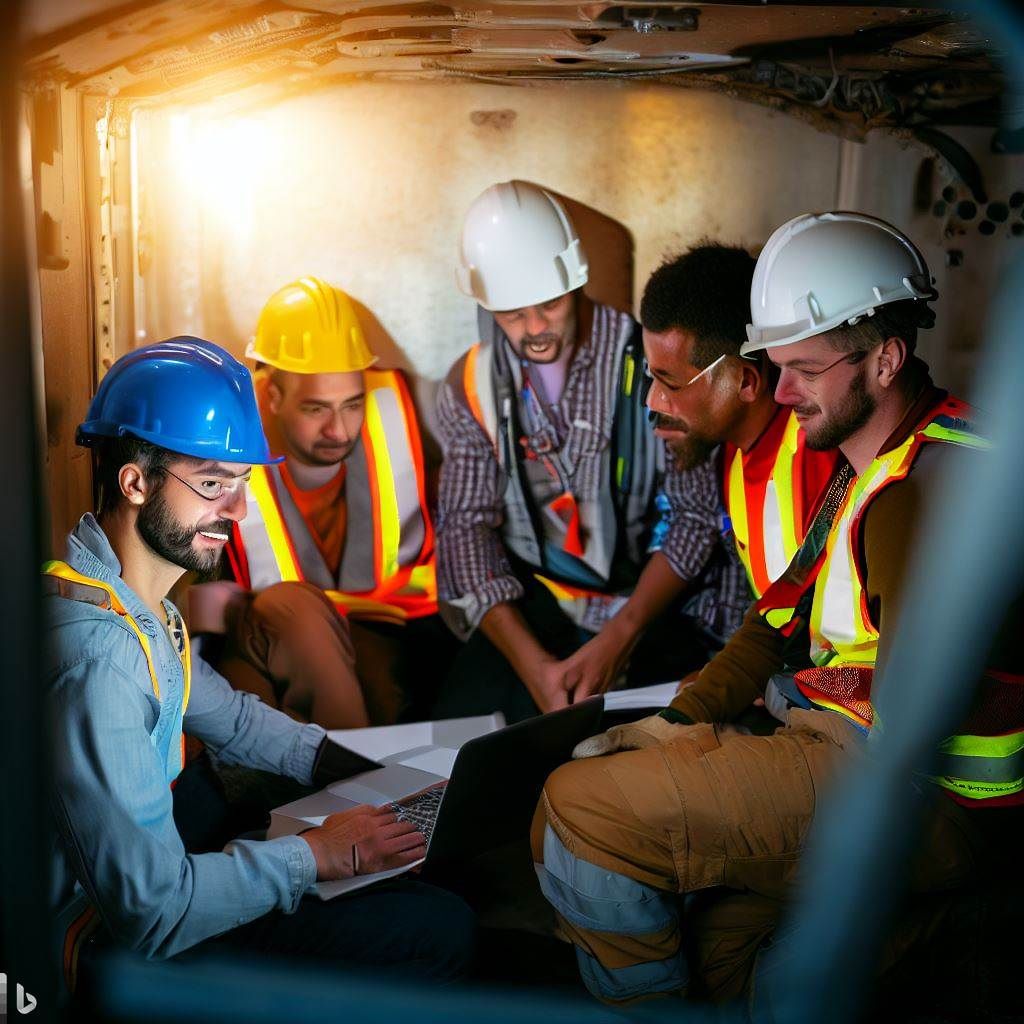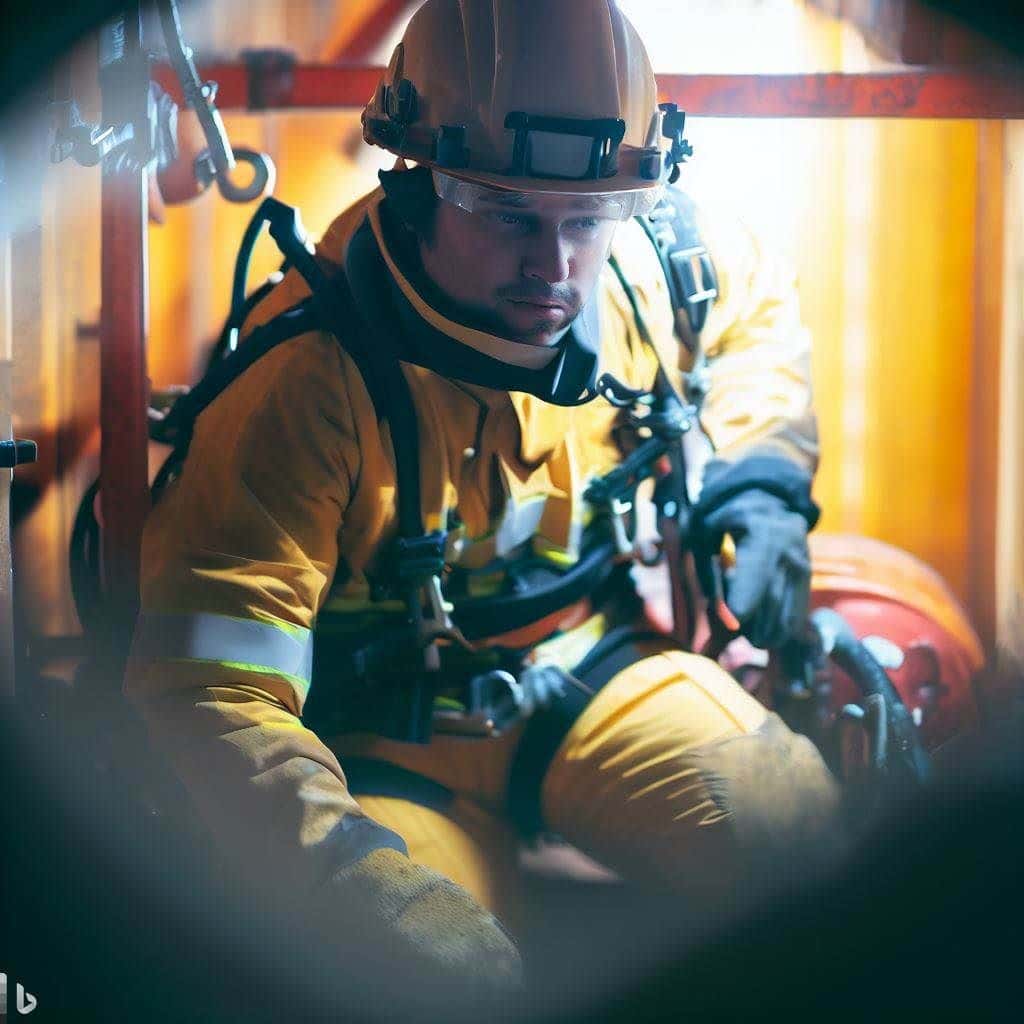Understanding the Duration: How Long is Confined Space Training Good For?
Confined space training is essential to workplace safety and compliance in various industries. It is designed to help workers understand the risks associated with working in confined spaces, learn how to prevent accidents, and respond effectively to emergencies.
Employers are legally obligated to ensure their employees are adequately trained and competent to perform tasks in confined spaces. This article aims to understand confined space training, its importance comprehensively, and how long it is valid.
Importance of Confined Space Training
Confined space training is crucial because it equips workers with the necessary skills and knowledge to identify and assess potential hazards, implement proper safety measures, and respond effectively to emergencies. Confined spaces can be extremely dangerous, and accidents can have severe consequences, including fatalities.
Therefore, employers must ensure that their workers receive adequate training and are competent to work in confined spaces safely. In addition to the obvious benefits of protecting workers from injury and death, confined space training can also help companies avoid costly penalties and legal liabilities.
Employers are required by law to provide a safe working environment, and failure to do so can result in fines, lawsuits, and damage to the company’s reputation. By investing in proper training, companies can demonstrate compliance with safety regulations and protect their bottom line.

Defining a Confined Space
A confined space is an area that is not intended for continuous human occupancy, has limited access and egress, and can pose hazards due to its design, location, and atmosphere. Examples of confined spaces include storage tanks, silos, pipelines, sewers, tunnels, and pits. Workers may be required to enter these spaces for various tasks, such as maintenance, repair, inspection, and cleaning.
Confined spaces can be hazardous due to several factors, including lack of ventilation, toxic gases or chemicals, the potential for engulfment or entrapment, and limited visibility. These hazards can lead to serious injuries or fatalities if not properly managed and controlled. Therefore, workers must receive appropriate training before entering and working in confined spaces.
Key Components of Confined Space Training
Confined space training typically covers various topics to ensure workers thoroughly understand the risks and precautions associated with confined spaces. Some key components of confined space training include:
- Identifying confined spaces and understanding their hazards: This includes learning to recognize confined spaces and the potential hazards they can pose to workers.
- Risk assessment and hazard control: Workers must learn to assess the risks associated with confined spaces and implement appropriate control measures, such as ventilation, isolation, and elimination of hazards.
- Confined space entry procedures: Training should cover safe entry procedures, including obtaining permits, preparing the space for entry, and using appropriate personal protective equipment (PPE).
- Emergency response and rescue: Workers must learn how to respond to emergencies in confined spaces, including rescue equipment and procedures for evacuating injured or incapacitated workers.
- Roles and responsibilities: Training should clarify the roles and responsibilities of each member of the confined space team, including the entrant, attendant, and entry supervisor.
How Long is Confined Space Training Good For?
The duration for which confined space training is considered valid varies depending on the country, industry, and specific regulations. Confined space training certificates generally are valid for two to three years. However, this can vary depending on factors such as regulation changes, the nature of the work, and the worker’s competence.
Employers must regularly review their employees’ training needs and ensure their confined space training certifications are up-to-date. This may require providing refresher training or re-certification courses to maintain workers’ competency and compliance with safety regulations.
Factors Affecting the Duration of Confined Space Training Validity
Several factors can affect the duration of confined space training validity, including:
- Regulatory requirements: Different jurisdictions and industries may have specific requirements regarding the frequency of confined space training and re-certification. Employers must ensure they are compliant with these regulations.
- Changes in work practices or equipment: If there are significant changes in work practices, equipment, or the confined space itself, workers may need additional training to ensure they can safely work in the altered environment.
- Worker competence: The validity of confined space training may depend on the worker’s ability to demonstrate competence in performing tasks safely. Employers should monitor and assess their workers’ skills and provide additional training if necessary.
- Incidents or near misses: If there have been accidents or near misses in the workplace, it may indicate that workers need additional training to reinforce their understanding of confined space safety procedures.
Signs That It’s Time for Confined Space Training Renewal
Some signs that it may be time to renew confined space training include:
- Expiration of the training certificate: As mentioned earlier, confined space training certificates generally have a two to three years validity period. Employers should track these expiration dates and arrange for refresher training or re-certification.
- Changes in regulations or industry standards: If there have been updates to confined space regulations or industry standards, workers may need updated training to remain compliant.
- Knowledge gaps or skill deficiencies: Regular assessments of worker competence may reveal knowledge gaps or skill deficiencies that indicate a need for additional training.
- New equipment or work processes: If new equipment or processes have been introduced, workers may require updated training to perform tasks in confined spaces safely.
Choosing the Right Confined Space Training Provider
Selecting the right confined space training provider ensures workers receive high-quality, comprehensive training that meets regulations and industry standards. When choosing a provider, consider factors such as:
- Accreditation and certification: Ensure the training provider is accredited and certified by relevant industry bodies and government agencies.
- Training content and delivery methods: Look for a provider that offers up-to-date, comprehensive training content and uses effective delivery methods, such as hands-on training, simulations, and scenario-based learning.
- Trainer qualifications and experience: Check the qualifications and experience of the trainers to ensure they have the necessary expertise to deliver high-quality training.
- Customization and flexibility: Choose a provider that offers customized training solutions tailored to your workplace needs and can accommodate your preferred training schedule.
- Reputation and reviews: Research the provider’s reputation and read reviews from other clients to gauge the quality of their training services.

Maintaining Confined Space Safety in the Workplace
In addition to providing comprehensive confined space training, employers must implement ongoing measures to maintain confined space safety in the workplace. These measures include:
- Regular risk assessments and hazard control: Continuously assess and control hazards in confined spaces to minimize the risk of accidents and injuries.
- Implementing safe work procedures: Develop and enforce safe work procedures for confined space entry and tasks, including obtaining permits, preparing the space, and using appropriate PPE.
- Monitoring and supervision: Ensure that confined space work is adequately monitored and supervised by competent personnel.
- Providing adequate resources and equipment: Ensure workers have access to the necessary resources and equipment to perform tasks safely in confined spaces, including rescue equipment.
- Encouraging a safety culture: Foster a culture of safety in the workplace by promoting open communication, recognizing and rewarding safe behavior, and encouraging worker participation in safety initiatives.
Conclusion
Understanding how long confined space training is good for and recognizing the importance of regular training renewal are essential to maintaining a safe workplace. Employers must ensure their workers receive appropriate, up-to-date training and regularly monitor their competence and validity. By investing in quality training and implementing ongoing safety measures, companies can protect their workers, comply with regulations, and maintain a strong safety culture.
Frequently Asked Questions
What is a confined space?
A confined space is an area that is not intended for continuous human occupancy, has limited access and egress, and can pose hazards due to its design, location, and atmosphere.
Why is confined space training important?
Confined space training is crucial for ensuring worker safety and compliance with regulations. It helps workers understand the risks associated with working in confined spaces, learn how to prevent accidents and respond effectively to emergencies.
How long is confined space training valid?
Confined space training certificates generally are valid for two to three years. However, this can vary depending on factors such as regulation changes, the nature of the work, and the worker’s competence.
What factors affect the duration of confined space training validity?
Factors that can affect the duration of confined space training validity include regulatory requirements, changes in work practices or equipment, worker competence, and incidents or near misses.
What are some signs that it’s time for confined space training renewal?
Signs that it may be time to renew confined space training include the expiration of the training certificate, changes in regulations or industry standards, knowledge gaps or skill deficiencies, and new equipment or work processes.
